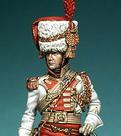loki100
Posts: 10920
Joined: 10/20/2012
From: Utlima Thule
Status: offline

|
quote:
ORIGINAL: charlie0311
This is absolutely true. The one exception is if the players agree to no Lvov pocket, but the Reds fight forward in the South and so you get a "slow" Lvov pocket. Then the axis players needs to get a kill in '42, usually because the sov player gives up, not quite knowing how to deal with the '42 panzer ball or understanding how to rebuild/build the Red army.
Given highly skilled players means no Lvov pocket = Red win.
My hope is that no one takes offense.
I am referring to the Lvov pocket post.
The worst, and I've seen it done, is to agree no Lvov and then the entire SW Front appears at Leningrad 2 turns later. But it works if both sides agree to some simple constraints and if actually gives a better game for the south. But its never easy to agree constraints in PBEM beyond binary rules ... unless you trust your opponent. For myself I have no interest in Michael_T style obsessing about this or that form of rule abuse, if someone wants to abuse an agreement/game engine etc in the search for a win .. well they are welcome to it.
quote:
ORIGINAL: chaos45
Interesting that morale will no longer be hard coded so if a unit loses alot of combat how does it ever recover? Does rest at least restore you to a certain minimum?
Both sides take way to few losses- its not just a Soviet issue. By 1942/1943 you end up with about 1 Million extra Germans and about 1-2 Million extra soviets....so not just 1 side has to many men. Its why combat needs to increase losses for both sides.
not hard coded I think means that the levels are no longer hidden in the .exe but can be manipulated in the scenario editor to amend/set up a scenario.
the problem isn't losses or army size as such, its what too large an army allows to happen.
For much of the war, and esp after Bagration, a typical Soviet rifle division was <6,000 men - now quite what that means is not immediately straight forward, so its best seen as the direct combat strength excl support elements (but then the Soviet division was pretty spare in that regard). Now if you did that in game, you'd have a 1cv division, probably around an 6-7 cv corps.
Its the interaction between notional numbers and effective combat power, as you've said a few times, the Germans having too much manpower means they never get really stretched, the Soviets with too much manpower never hit constraints around replacements.
Its worth noting that in the period from March 44 - Aug 44 when Tolbukhin's Front stayed on the defensive on the lower Dneistr he got something like 15,000 replacements from Stavka ... and like all Soviet commanders tried to fill out the gaps in his divisions by forced recruitment from the recently liberated Dneipr region.
I think under WiTE2 managing the rail net is going to be very different. That and the supply system will create a different set of parameters for the game. In WiTW your rails are ferrying supplies, reinforcements and complete formations and its very easy to run into bottlenecks as a result. In 1941, Soviet factory evac is going to slow the arrival of replacements (never mind new formations), so as the year goes on the Soviets will get more ragged ... but so will the Germans.
quote:
ORIGINAL: Red Lancer
...
- So let's turn this around a little - is the problem that the Soviets lose too little manpower or receive too much? Would we be better ignoring the combat issue and focusing our time on manpower production and population evacuation? If we made population evacuation more difficult - perhaps so that players would have to hold ground forward to get them out would that be better? So you could run away but it will mean that you will receive less men.
yes ... I think in reality both sides ran out of manpower long before it becomes an in-game constraint. This and higher attrition would go a long way to resolving this.
< Message edited by loki100 -- 10/9/2015 2:36:19 PM >
_____________________________
|
 Printable Version
Printable Version











 New Messages
New Messages No New Messages
No New Messages Hot Topic w/ New Messages
Hot Topic w/ New Messages Hot Topic w/o New Messages
Hot Topic w/o New Messages Locked w/ New Messages
Locked w/ New Messages Locked w/o New Messages
Locked w/o New Messages Post New Thread
Post New Thread